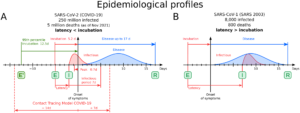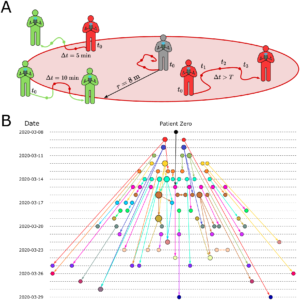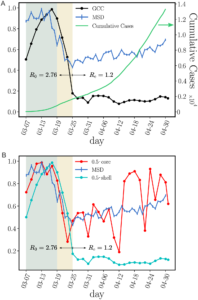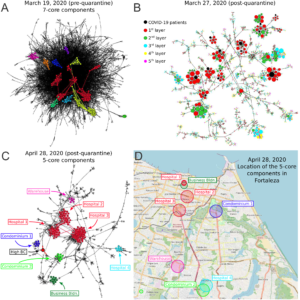Introduction
Since the start of the COVID-19 pandemic, countries in the world have implemented different policies to contain the spread of the virus, including mask and vaccine mandates, travel restrictions, and mandatory quarantine. Fast forward to today, with the development of vaccines and treatments and the lowering of hospitalization and death rates, coupled with the rise of complex social-economic issues caused by COVID-19 restrictions, many countries, including Canada, have decided to ease or completely lift their COVID-19 policies. However, there are some countries that still have very strict restrictions, like China’s controversial “Zero-COVID” measures that include the mandatory use of contact tracing apps, mandatory quarantine, and lock-downs in “high-risk” regions. There are many debates on the effectiveness and necessity of China’s covid policies. The aim of this blog is to analyze what it actually takes to stop the spread of the coronavirus, drawing upon a recent study on COVID control strategies.
Analysis
In a recent study on COVID-19 transmission, the authors developed a contact tracing algorithm to analyze the chain of transmission with big data on human mobility geolocalization. The authors first analyzed the transmission model of two coronaviruses (COVID-19 and SARS-2003) and found that COVID patients are at a most contagious stage, in average, about one to two days before the onset of symptoms, meaning that major transmission have most likely already occurred before patients start to self-isolate.

This means that the use of contact tracing and back-tracking to identify and isolate contacts of infected patients play a big role in containing the spread of COVID-19. Image 2.A shows a contact tracing model to trace several layers of contacts in the transmission network, identifying both infected and susceptible people that entered the contact area. Image 2.B shows a partial transmission tree of an infected person in March of 2020, the date represents the first day of symptoms and colours representing the out-degree of each node.

The authors then analyzed a case when the state of Ceará imposed a mass quarantine March 19, 2020. Image 3.A shows the evolutions of different metrics during quarantine. Note the decrease in the size of GCC (giant connected component) after lockdown but the increase of cumulative cases.

Before quarantine, the network is very strongly connected (Image 4.A); during quarantine, the large component disintegrated but a few smaller yet still strongly connected components can be observed (image 4.B and 4.C). The authors proposed that these “super-spreading” cores in the contact network contribute most significantly to the virus transmissions, and identifying them can lead to more optimized quarantine measures.

Conclusion
This study identifies the “super-spreading” core structure with high betweenness of a contact network that can be used to develop a more effective control strategy with minimal social disruptions. However, this approach still depends heavily on the coverage of contact tracing technologies and mandatory quarantine measures which could be a controversial social issue.
Citations
Serafino, M., Monteiro, H. S., Luo, S., Reis, S. D., Igual, C., Lima Neto, A. S., Travizano, M., Andrade, J. S., & Makse, H. A. (2022). Digital Contact Tracing and network theory to stop the spread of covid-19 using big-data on human Mobility Geolocalization. PLOS Computational Biology, 18(4). https://doi.org/10.1371/journal.pcbi.1009865